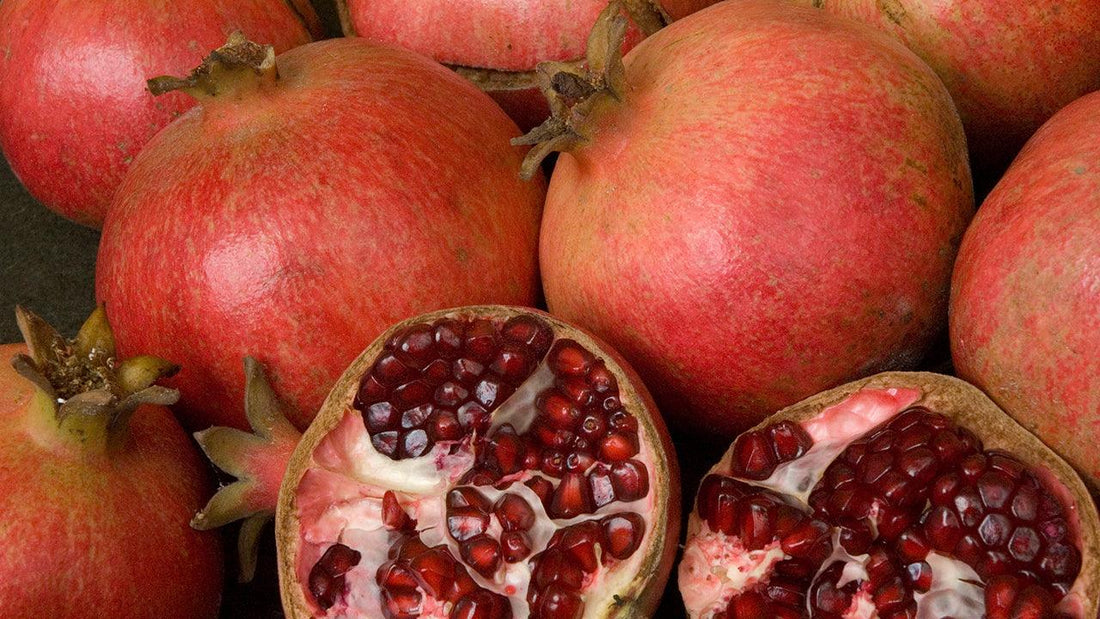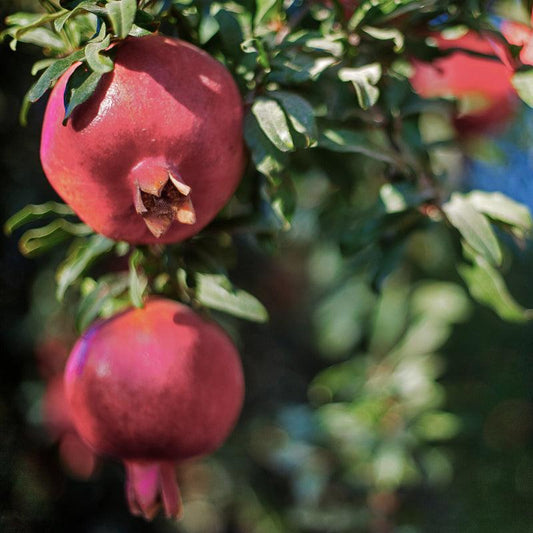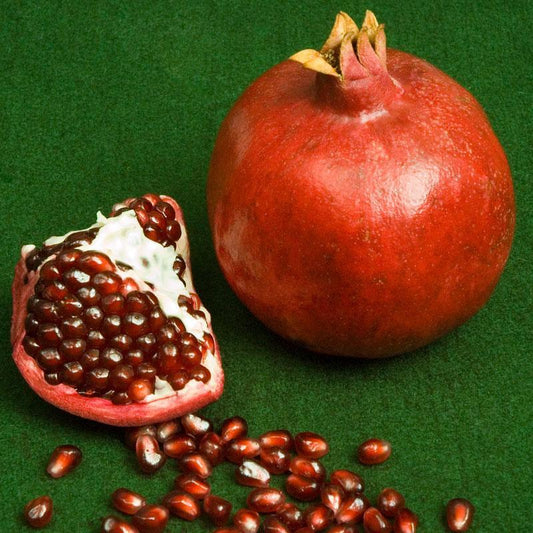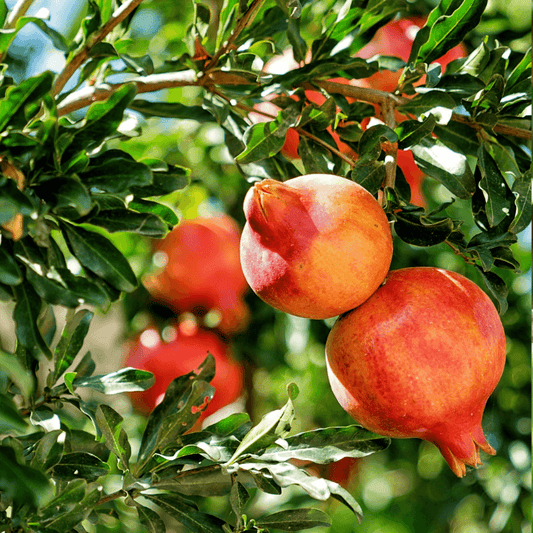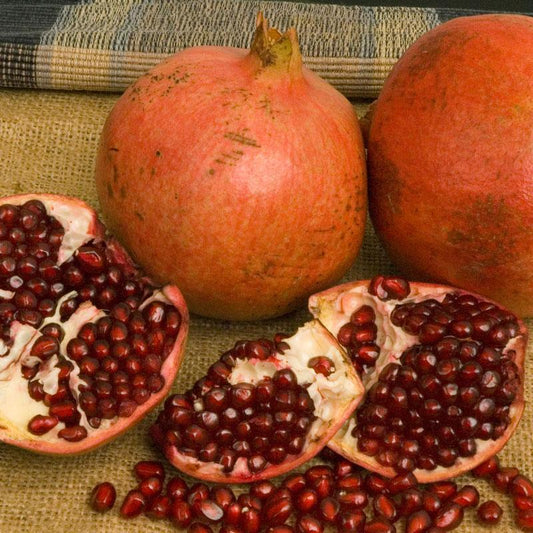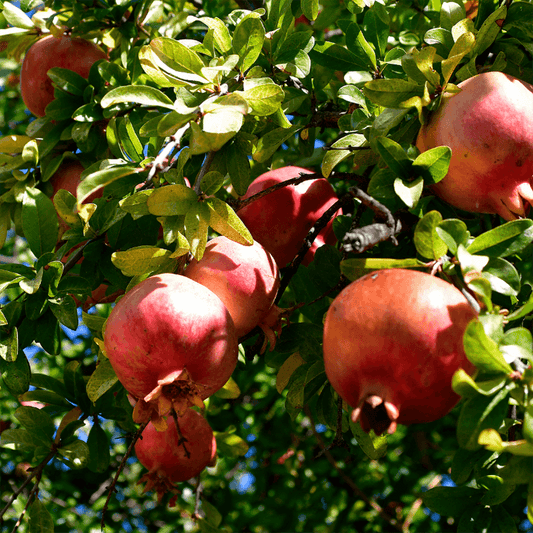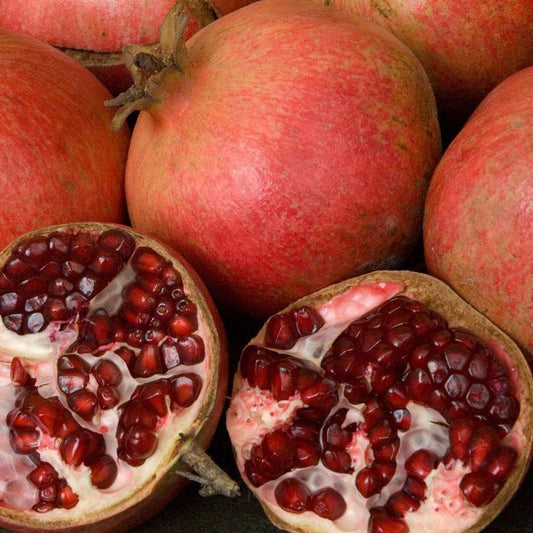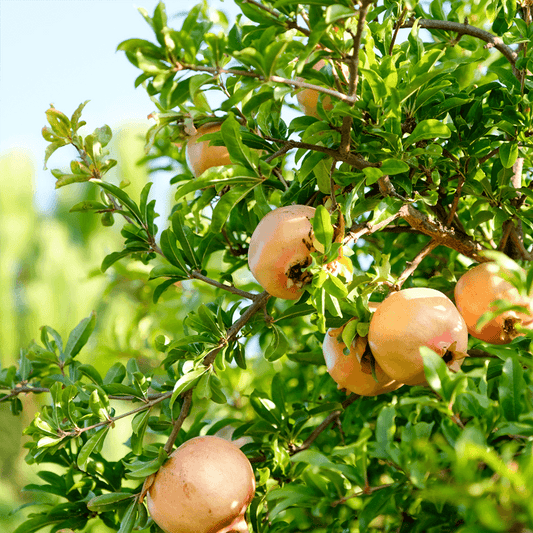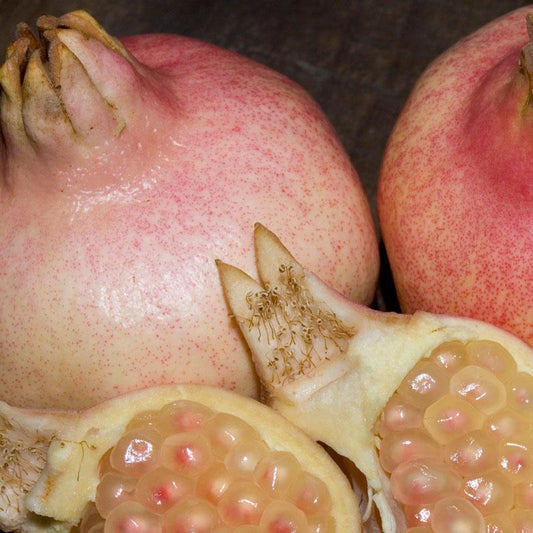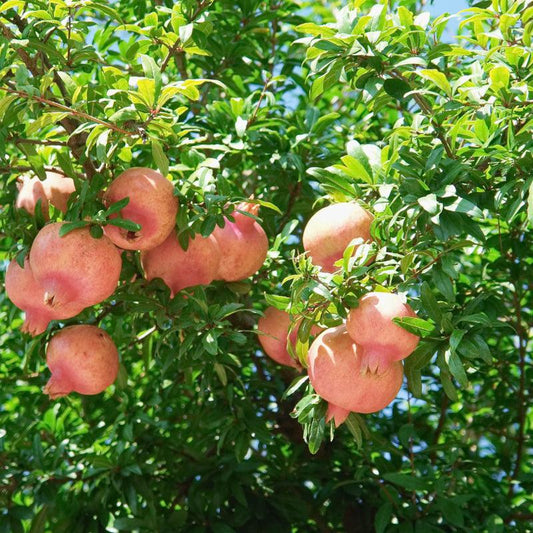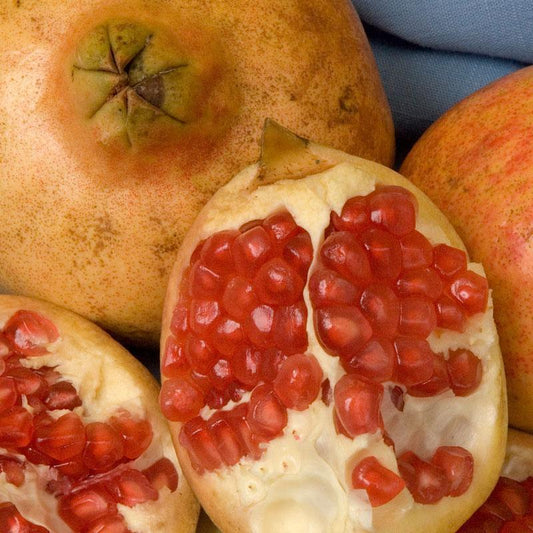Pomegranate trees play many roles in the edible landscape. They can be pruned as a single or multi-trunk tree, trained along a fence as an espalier, grown as a hedge, a bush or in a container. They are beautiful in three out of four seasons! For success, choose a tree suited to your zone and with appropriate chill time.
Heeling In
When you receive your pomegranate trees they will be boxed securely. If you are not ready to plant or if the temperatures are too cold, immediately place them in a sheltered location, safe from frost. A root cellar, basement, or garage works well. It’s important choose a place where the temperature stays between 38°F and 45°F. This is important so the roots neither freeze, nor does it get warm enough to break dormancy. It is essential that the young tree roots have plenty of time to become established before the tree begins its spring limb growth and bud break.
Planting
For outdoor planting, wait until all danger of frost has passed. The root structure must have adequate time to establish in order to deal with colder temperatures. Pick a sunny location since fruit production will be affected by compromised light. Soil should be well-drained and pH is not a determining factor. Locations affected by winds or that are consistently wet should be avoided.
Do not amend the planting hole when planting pomegranates. If amendment is necessary try to do it before the tree is planted and only around the planting site, not in the hole. If gophers are a problem in your area, a wire gopher basket should be placed in the hole. Gophers are less of a threat to mature trees, but this protection could mean the difference between life and death for a young tree.
Two more factors must be considered before planting: wind and sun. If high winds will be a factor in your planting location, then the tree should be tilted slightly towards the wind’s prevailing direction. Do not overdo it, a slight tilt will suffice.
Dig a hole the same depth as the root system and two to three times as wide as the root system. Current research indicates that a saucer shaped hole with sides that slope gently upward, the same depth and three times the width of the root system stimulates the most root growth.
Do not plant your trees too deeply, it is usually best to plant the tree to the same level it was planted in the nursery. Backfill with the soil. Lightly compact the backfill with your hand, adjusting the tree gently so that the backfill reaches original planting depth. The back fill should slope gently up so the crown of the tree is slightly higher than the surrounding soil, this will help prevent crown rot.
Water the tree thoroughly and watch for settling. If undue settling occurs, elevate the tree very slightly to raise its height and release any subsoil air pockets. Pomegranates like to be mulched, mulch them well and make sure the mulch starts four to six inches away from the trunk of the tree and extends a couple of feet past the canopy.
Fertilization
It is not recommended that you fertilize your tree at the time of planting. There are some regional exceptions, contact your local Master Gardeners for advice. Once established, feed in February, May and September with a balanced amendment.
Viability
Pomegranates when dormant appear very dry and brittle. The trunk should be pliable and if lightly scratched will have a greenish tinge beneath the bark.
Ongoing Tree Care
Staking may be necessary but should be done carefully. A young tree that struggles a little against the wind, without being blown over, develops tissue in its trunk that will strengthen the tree as it matures. Tightly staked trees that do not develop this tissue are at greater risk of wind damage as they grow older. Staking should provide emergency assistance to a young tree, but should not interfere with its natural capacity to resist wind.
To properly stake your tree, drive two sturdy poles deeply into the ground on opposite sides of the tree from each other. The two poles and the tree should demarcate a straight line directly into the prevailing wind. Using a plastic tie or cord attached securely to each pole, create a loose harness that will allow the tree sufficient movement in the wind at least a few inches in all directions. If rain is not timely, then occasional watering will be necessary.
Over-watering can kill young trees. Moist, workable soil is sufficient; soggy soil is dangerous and often fatal. As the tree matures, you will want to water deeply but infrequently; commercial orchardists water for more than 12 hours at a time, but sometimes only two or three times during a season.
As your tree matures, pruning will become the most critical factor in its proper growth and development. Removal of dead wood or of suckers is necessary. If you do not desire a tree shape for your pomegranate let the suckers grow and the pomegranate will develop a bush shape.
Spraying fruit trees during the dormant season is an important preventative to many diseases and pest problems. Traditionally fruit trees are sprayed three times a year: at leaf drop (Thanksgiving), during full dormancy (New Year’s) and at bud swell (Valentine’s Day). Check out our selection of natural and organic dormant sprays.

